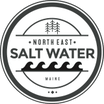
Crab Monitoring Surveys
Old Crabs, New Crabs: Green Crabs, Blue Crabs
The European green crab has become a major threat to the local ecosystems as it continues to invade coastal areas, damaging oyster and clam populations and harming eelgrass habitat. Rising green crab numbers, linked to increasing ocean temperatures, worsen ecological and economic challenges, especially in regions like the Gulf of Maine where the ocean is warming is faster than average.
To help, citizen scientists, students, fishermen and institutions are collaborating by monitoring green crab populations along the East Coast. Captain Joe Jerome from North East Salt Water joined this effort in 2022 by collecting data during EcoTours and aquaculture field trips to track crab numbers, size, and gender in our area.
The data is shared with leading marine institutions throughout New England to help them make informed decisions on how we can mitigate this threat. Through teamwork and using data, these institutions aim to protect marine life and reduce the harm caused by invasive species on our environment and economy.
If you would like to volunteer by setting up your own green crab monitoring survey, read through our guide on how you can get involved.
Blue Crabs in Maine?
The Gulf of Maine’s warming waters are creating favorable conditions for blue crabs to expand their territory further north, and local fishermen have reported increasing numbers of encounters in the recent years.
If you discover a blue crab, please report your sighting, including the date and location, photos, and information on the crab's sex and size.
How to set up your own green crab survey
Please reach us at joseph.m.jerome@gmail.com if you cannot find an answer to your question.
Participants range from citizen scientists and students, to commercial fisherman and marine institutions. Anyone can volunteer to get involved so long as they have access and time to regularly bait, haul, monitor, and report results throughout the summer months.
Read through Manomet's Green Crab Project outline on their website for more detailed instructions on how to set up your survey.
Submit an application for a Green Crab Harvesting Permit with the State of Maine. This license costs $10 for residents and $20 for non-residents
Find a rocky area with lots of seaweed along a long stretch of shoreline that is protected from big waves. Make sure your traps are positioned away from boat launch sites, public swimming areas, heavy boat traffic routes, and established commercial fishing and aquaculture spots.
Conduct your surveys between May and November during low tide around the new and full moon cycles.
Visit the Anecdata website and join the Intertidal Green Crab Project. Download the survey sheets and record the data on your computer or download the app!
Join us for a Thanksgiving Crab Feast after the last spring tide of November where we will all gather together for a fun afternoon of food & drinks with representatives from the regional monitoring programs.
- All native species of crabs must be safely released back into the water.
- Blue Crab sightings should be reported separately to Manomet.
- We highly encourage that all Green Crabs caught be removed from the water. As well as providing a delicious meal they can also be used as a high quality and sustainable fertilizer. Learn how to make Green Crab Fertilizer!
Ready to start volunteering?
We are always happy to answer any questions or connect you with the right people
Related Workshops and Field Trips
North East Salt Water
47 Wallace Circle, Phippsburg, Maine 04562, United States

